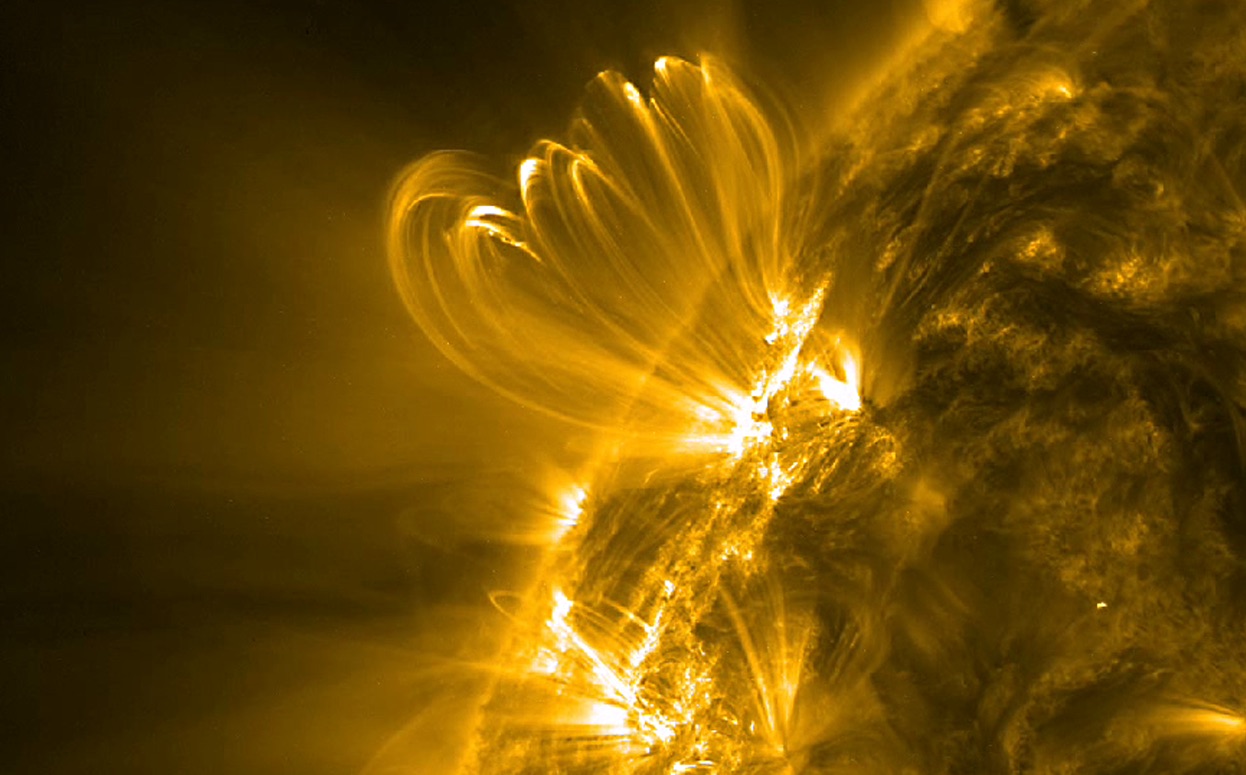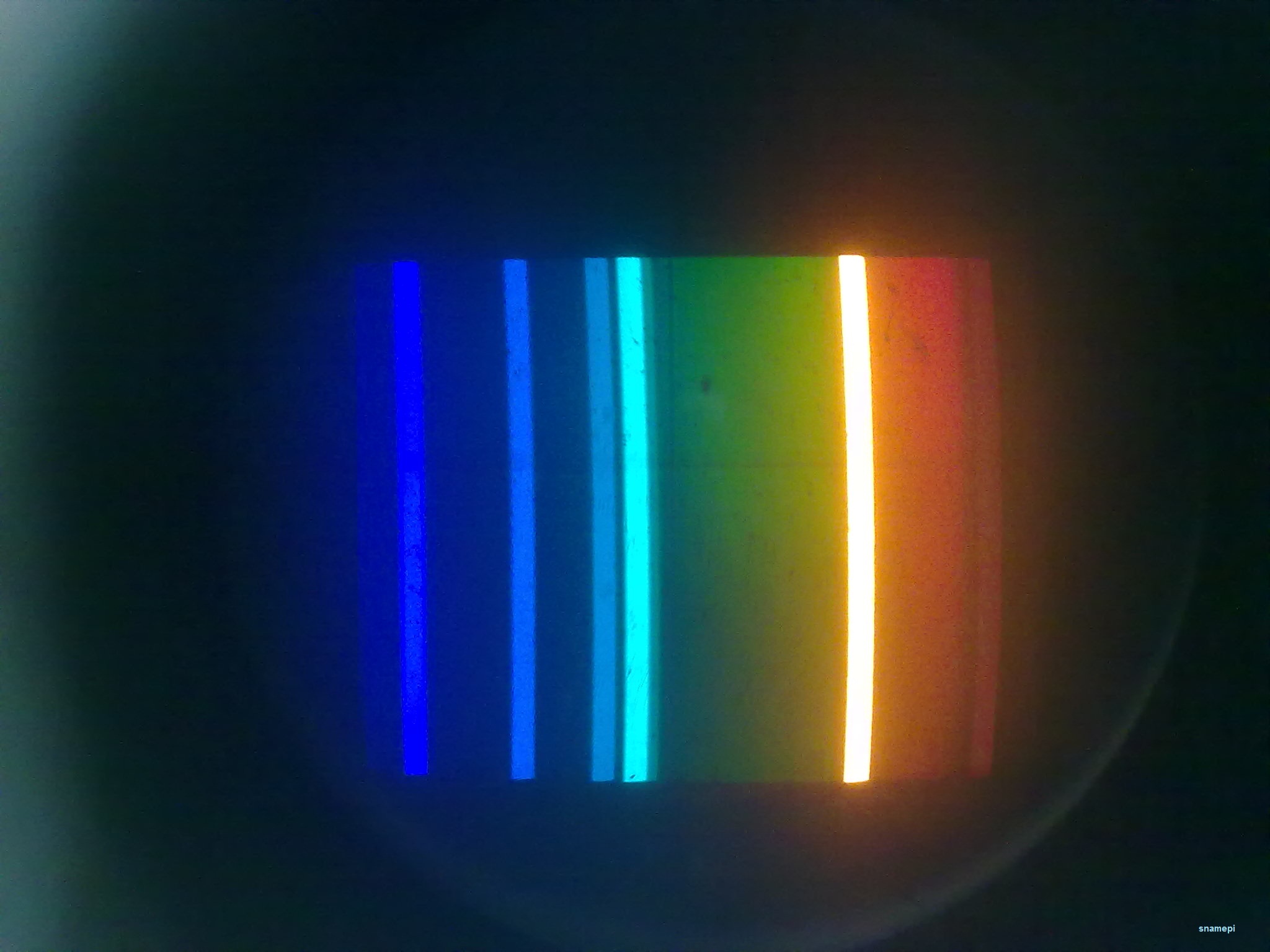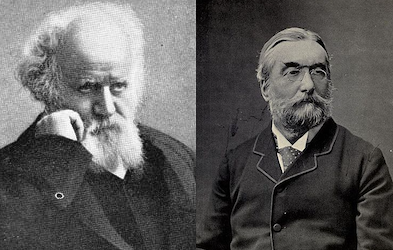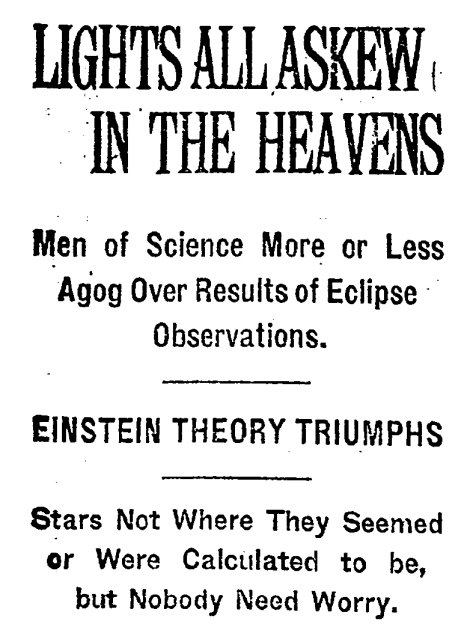From helium to relativity, eclipses have a history of producing big finds
Here are multiple ways for you to join in the eclipse science tradition on August 21
On August 21, millions of Americans will become astronomers for a few minutes. The first total solar eclipse visible from the United States in 26 years will draw crowds of onlookers – hotels and campgrounds along the eclipse path have been booked for months.
During a total solar eclipse, the moon covers the bright disk of the sun. If the sun were a perfect sphere, it would disappear entirely, plunging the viewer temporarily into full darkness. But beyond the surface of the sun extends the corona. Full of beautiful loops and streamers, the corona is normally invisible against the blinding light of the full sun.
Satellites like NASA’s Solar Dynamics Observatory keep constant watch on the Sun, monitoring solar storms that could endanger communications of satellites orbiting Earth. Despite these advances, the Moon remains the best tool for shielding the solar glare and glimpsing the elusive corona.

A coronal loop, observed by NASA's Solar Dynamics Observatory
Because of its path over populated areas, the August eclipse will likely be the most viewed in history. Two teams plan to exploit this fact to coordinate observations across the United States. The Sun will be completely blocked for only a couple minutes from each viewing spot. But the Citizen CATE Experiment, led by the National Solar Observatory and including citizen scientist participants, will combine images from 60 telescopes along the track of the eclipse. The continuous view of the darkened Sun will create a data set for researchers to study.
Armed with a cameraphone, anyone can participate in the Eclipse Megamovie 2017. Led by researchers at the University of California Berkeley and Google, this project will enlist thousands to take photographs of the eclipse from their various locations. Taken together, the photographs will form a 90-minute movie of the elusive solar corona.
These citizen scientists will become part of a legacy of eclipse science that once led to the discovery of a mysterious gas and confirmation of one of the most stunning revolutions in modern physics.
The corona drew French astronomer Pierre Janssen to India in 1868 to observe a total solar eclipse. Janssen carried an instrument called a spectroscope. It acts like a prism, splitting light into a rainbow of colors. When the moon blocked the sun’s disk, Janssen pointed his instrument at a large loop in the corona.

Helium spectral lines
The rainbow spilling out of Janssen's spectroscope contained a bright yellow line. Just as neon glows red, different gases emit different colors when heated. The yellow line had never been seen anywhere on Earth; Janssen had discovered helium.
Two months later, Sir Norman Lockyer independently discovered the same yellow spectral line. Lockyer and Janssen’s findings reached the French Academy on the same day and were published together. Helium was the first element discovered in space and wouldn’t be found on Earth for another 27 years.
Janssen remained a dogged eclipse hunter. During an eclipse visible from Algeria in 1870, Paris was under siege by a German army. According to a 1908 obituary, Janssen “escaped from the city in a balloon [but] clouds obscured his view of the eclipse.”

Janssen (left) and Lockyer (right)
For his part, Lockyer was also an avid eclipse enthusiast. His passion was memorialized in a piece of doggerel reported in a 1921 obituary:
And Lockyer, and Lockyer,
Gets cockier, and cockier;
For he thinks he’s the owner
of the solar corona.
A decade after helium was discovered, Albert Einstein was born in Germany. Einstein’s relativity revolution would motivate another eclipse expedition.
Albert Einstein’s theory of general relativity explains gravity as the curvature of space in the presence of matter. This “weird theory” was three years old when Arthur Stanley Eddington, director of the Cambridge Observatory, announced an experiment to test it during the solar eclipse of 1919.
Eddington and Frank Watson Dyson, director of the Royal Greenwich Observatory, planned to photograph stars very close to the eclipsed sun. According to general relativity, light passing near a massive object will be deflected as if passed through a glass lens. If Einstein was right, the stars would appear at slightly different positions when observed near the sun compared to their normal positions in the night sky.
The shift would be small, equivalent to seeing a penny two kilometers away. To increase their odds of success, they organized expeditions to both Brazil and Principe, off the coast of western Africa.
In Brazil, Eddington was plagued by clouds – scourge of eclipse hunters throughout history – and was unable to observe enough stars. The Principe team avoided clouds and successfully measured the deflection of starlight by the sun’s gravity, just as Einstein had predicted.
The confirmation of general relativity was announced with bold headlines in newspapers around the world. The New York Times trumpeted, “Men of Science More or Less Agog Over Results of Eclipse Observations.”

The New York Times on November 10, 1919
The New York Times
The far-reaching implications of Einstein’s theory were not yet fully appreciated. The same article quotes Dr. W. J. S. Lockyer, son of the astronomer who helped discover helium, “The discoveries, while very important … do not personally concern ordinary human beings; only astronomers are affected.” Today, general relativity is vital to the function of GPS, used by millions of human beings each day.
Beyond bad omens and strange animal behavior, beyond dazzling diamond rings and streamers of plasma arcing across the sky, this lucky alignment of Earth, Sun, and Moon gives us a powerful tool for discovery. To access that tool, researchers have endured long expeditions and lousy weather. When you are stuck in traffic this August, picture Pierre Janssen escaping Paris in his hot-air balloon, on his way to meet the shadow of the Moon.